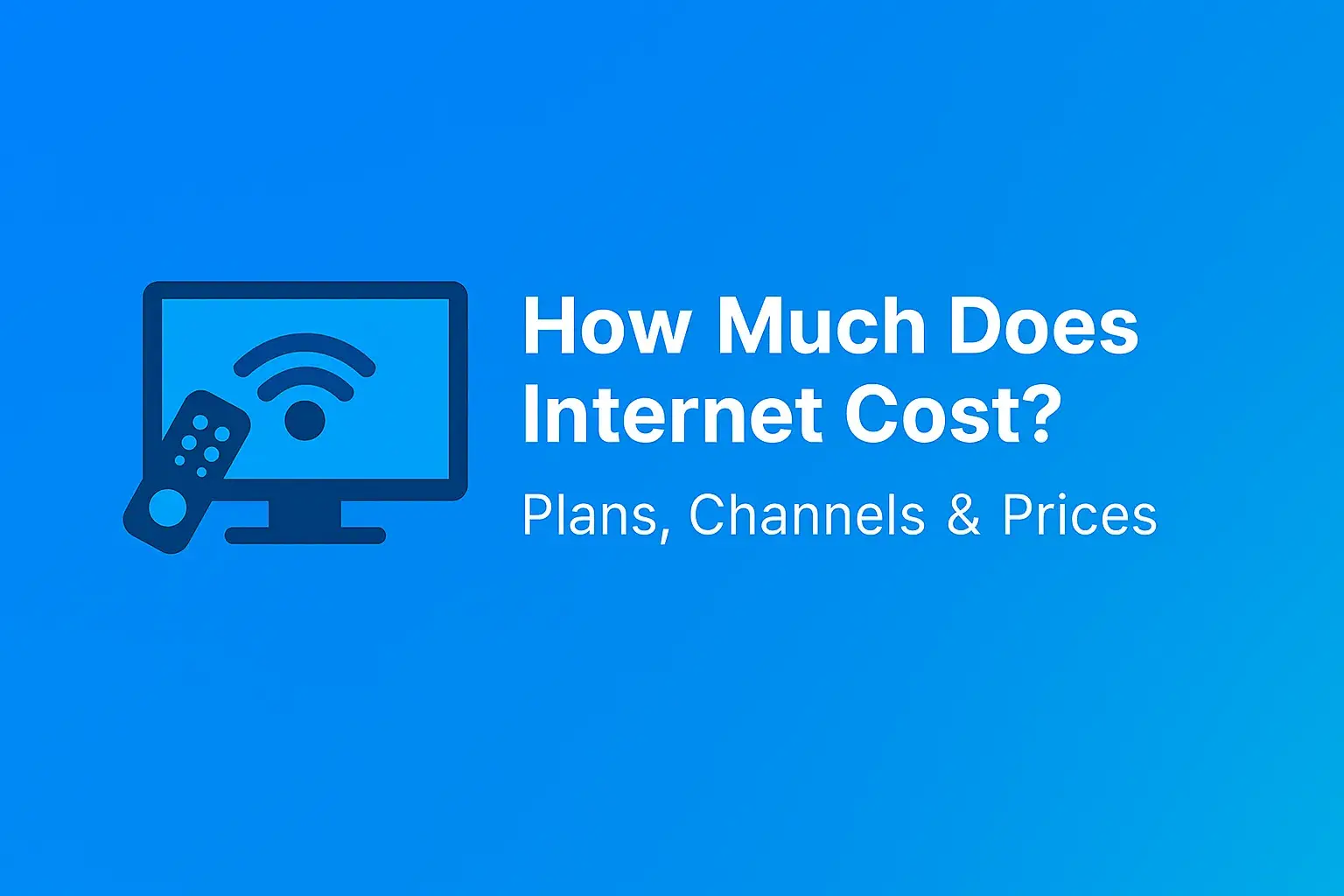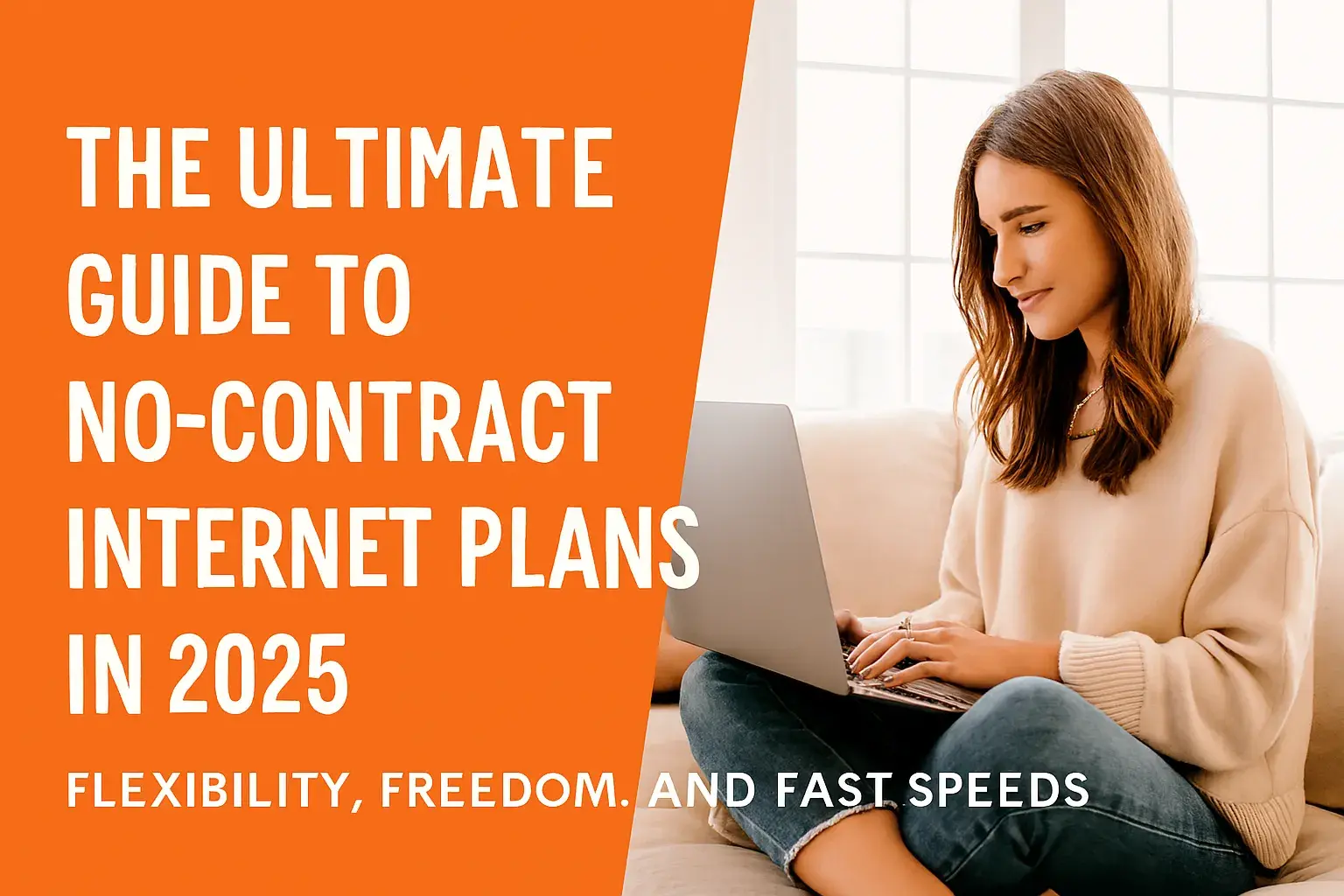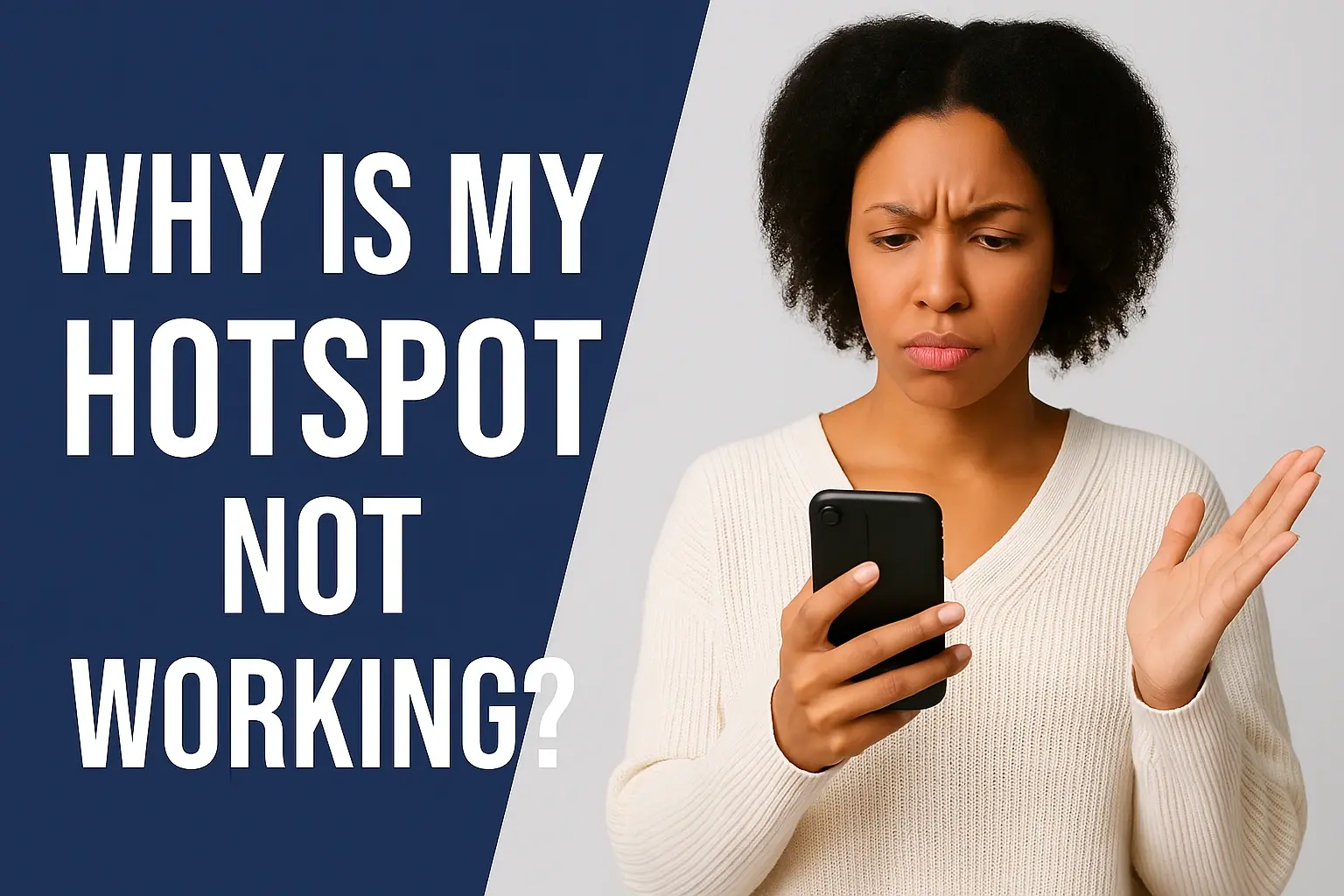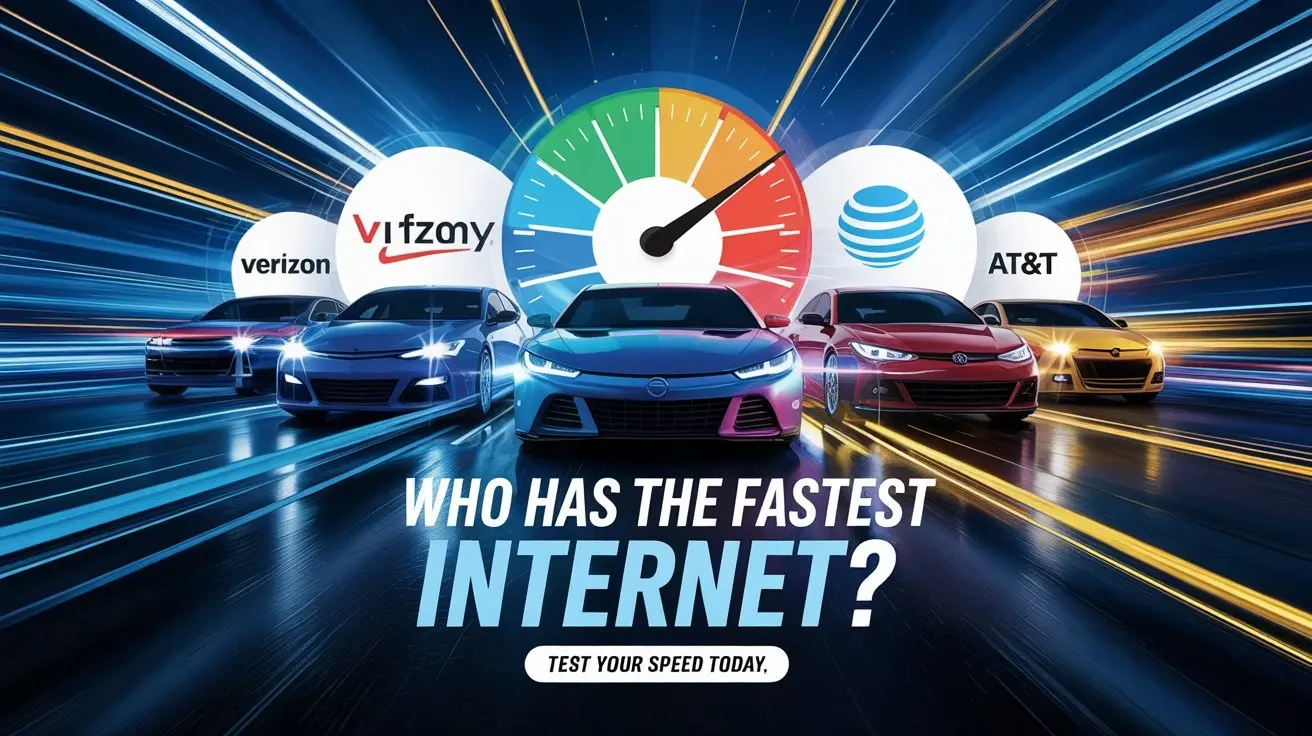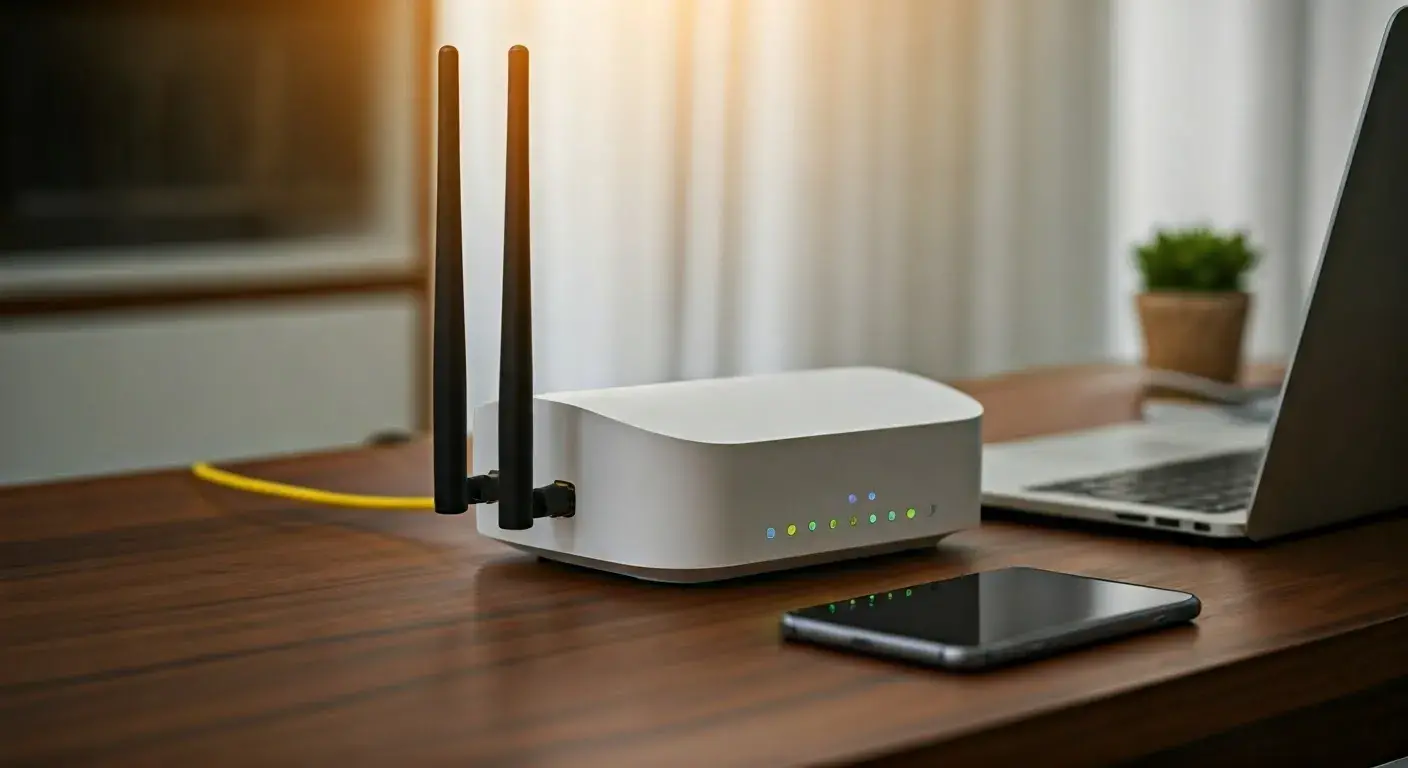How much does it cost to install fiber cable?
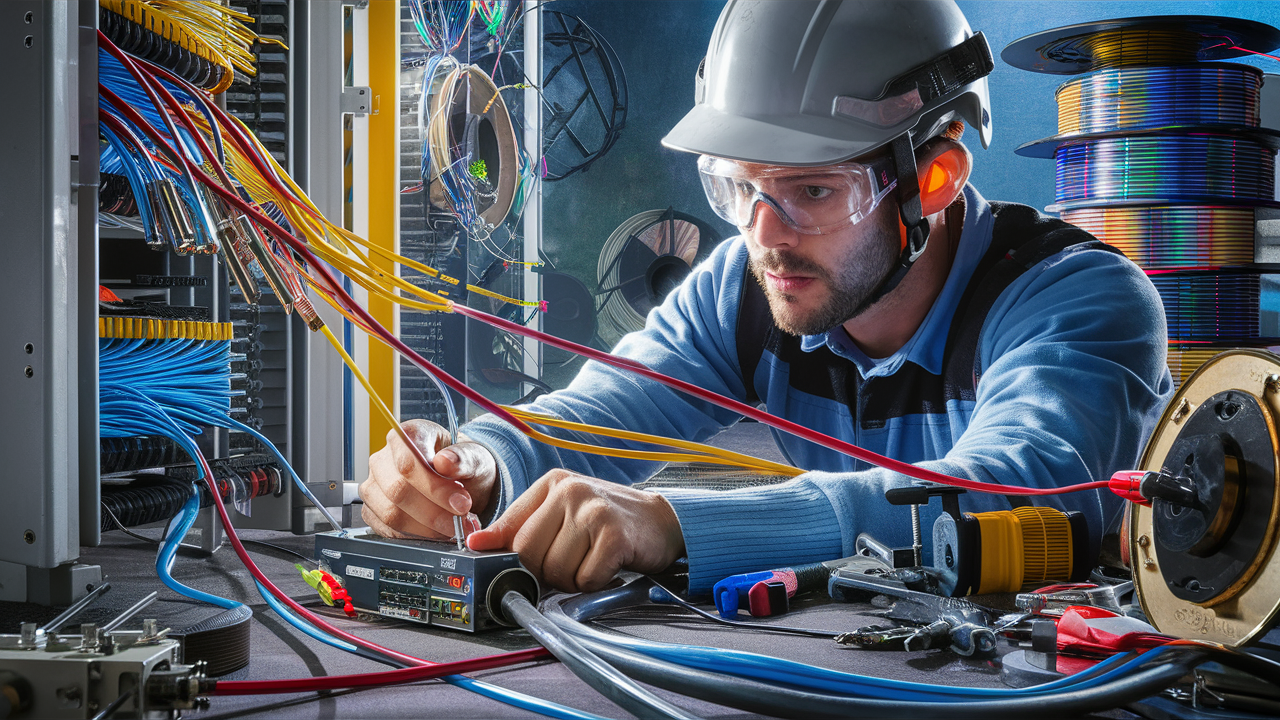
Understanding the cost of fiber cable installation is crucial for homeowners and businesses alike. This comprehensive guide breaks down the factors influencing pricing, average expenses, and tips to get the best value in 2025.
Understanding the Core Factors Influencing Fiber Cable Installation Costs
The question "How much does it cost to install fiber cable?" doesn't have a single, simple answer. The price tag is a mosaic, pieced together by a variety of elements. These range from the geographical location of your property to the complexity of the installation itself, and even the specific provider you choose. In 2025, we're seeing continued advancements in fiber technology, which can sometimes lead to more efficient installations, but the underlying cost drivers remain largely consistent. Understanding these drivers is the first step to accurately budgeting for your fiber optic internet service.
Several key components contribute to the overall expense. These include the labor involved in trenching, drilling, and running the cable; the cost of the fiber optic cable itself; the necessary equipment like modems, routers, and network interface devices; and any permits or fees required by local authorities. Furthermore, the distance the fiber needs to travel from the main network to your premises is a significant determinant. Longer distances generally translate to higher installation costs. The type of installation—whether it's aerial or underground—also plays a crucial role. Underground installations, while often more aesthetically pleasing and protected, typically incur higher upfront costs due to the excavation work required.
The provider's pricing structure is another critical factor. Some companies offer free or heavily subsidized installation as part of a promotional package or with longer contract commitments. Others charge a flat fee, while some might have tiered pricing based on the complexity of the job. It's also important to distinguish between the cost of the physical installation of the fiber optic line to your property and the ongoing monthly service fees for internet access. This guide focuses primarily on the upfront installation costs, but we'll touch upon how service plans can influence the overall financial picture.
Residential Fiber Cable Installation Costs
For homeowners, the installation of fiber optic cable typically involves bringing the service from the nearest network access point to their residence. The cost for this can vary widely, but in 2025, you can expect a broad range. Many providers aim to make residential installations more accessible, often bundling installation fees into attractive introductory offers. However, if you're looking at a standard, no-frills installation without any special promotions, the cost can range from approximately $100 to $500.
This range accounts for the technician's time, the materials used to connect your home, and the activation of the service. In cases where the fiber line needs to be extended a significant distance from the street, or if the property presents unique challenges (like a long driveway, steep terrain, or the need for extensive landscaping repair), the costs can escalate. Some providers might charge an additional fee for installations that exceed a certain distance, perhaps 100-200 feet from the point of connection. These fees can add anywhere from $50 to $200 or more per extra unit of distance.
The type of fiber connection also matters. Most residential installations will utilize a single-mode fiber optic cable, which is standard for delivering high-speed internet. The equipment provided by the ISP, such as the Optical Network Terminal (ONT) which converts optical signals to electrical signals, is usually included in the installation fee or is part of the monthly service cost. If you opt for a more advanced router or need additional network setup for a smart home, these can be separate costs. For instance, purchasing a high-quality Wi-Fi 6E router might add $100-$300 to your initial investment, though many ISPs offer rental options for their modems/routers at a monthly fee.
It's also worth noting that some newer developments or neighborhoods might have existing fiber infrastructure already laid, which can significantly reduce installation costs. In such cases, the installation might be as simple as connecting the existing line to your home, potentially costing as little as $50 or even being offered for free by the provider. Conversely, in areas where fiber has not yet been deployed, the cost of extending the network to your street could be a factor, though this is typically borne by the provider as an investment in expanding their service area, rather than directly by the individual homeowner, unless it's a very remote or niche situation.
Residential Installation Cost Breakdown
Let's break down the typical components of a residential fiber installation:
- Labor: This covers the technician's time for site assessment, cable pulling, splicing, and equipment setup. This is often the largest single cost component, especially for complex installations.
- Materials: This includes the fiber optic cable itself, connectors, protective conduits, and mounting hardware.
- Equipment: The ONT (Optical Network Terminal) is essential. Some ISPs include this, while others may charge a one-time fee or a monthly rental.
- Permits and Fees: Depending on your local municipality, permits might be required for trenching or drilling, adding to the cost.
- Distance Charges: For installations exceeding a standard distance from the network, extra charges may apply.
Promotional Offers and Discounts
Many fiber internet providers in 2025 heavily rely on promotional offers to attract new customers. These can significantly reduce or even eliminate upfront installation costs. Common promotions include:
- Free Installation: Often tied to signing a 12-month or 24-month contract.
- Discounted Installation Fee: A reduced fee, for example, $50 instead of $100.
- Bundled Deals: Installation might be included when you bundle internet with TV or phone services.
- No Equipment Fees: The ONT and router are provided at no extra charge.
Always inquire about current promotions when signing up for service. These can represent substantial savings, bringing the effective cost of installation down to zero in many cases.
Commercial Fiber Cable Installation Costs
For businesses, the installation of fiber optic cable is generally more complex and, consequently, more expensive than for residential customers. This is due to several factors, including the potential need for longer cable runs, more robust network infrastructure, higher bandwidth requirements, and the critical nature of uninterrupted service for business operations. In 2025, commercial fiber installations can range anywhere from $500 to several thousand dollars, depending on the scale and specific needs of the business.
The primary drivers for higher commercial costs include:
- Scale and Distance: Businesses often require fiber to be run from a point of presence (POP) to their building, which can be considerably further than a residential connection. If the business is located in a multi-tenant office building, the cost might be lower as the main fiber line is already present. However, if it's a standalone building or a campus environment, extensive trenching or aerial deployment may be necessary.
- Dedicated vs. Shared Fiber: Residential connections typically use shared fiber infrastructure, meaning multiple users draw from the same line. Businesses may opt for dedicated fiber lines, ensuring maximum bandwidth and reliability, which incurs higher installation costs.
- Network Complexity: Commercial installations might involve setting up multiple network drops within the building, connecting various departments, servers, and workstations. This requires more labor, cabling, and networking equipment.
- Service Level Agreements (SLAs): Businesses often require stringent Service Level Agreements guaranteeing uptime and repair times. The infrastructure and support needed to meet these SLAs can add to the initial installation cost.
- Specialized Equipment: Beyond the standard ONT, businesses might need enterprise-grade routers, switches, firewalls, and potentially uninterruptible power supplies (UPS) for critical network components, all of which contribute to the overall expense.
For small businesses with relatively simple needs, a basic fiber installation might fall in the $500-$1,500 range. However, for larger enterprises, or those requiring extensive network build-outs, the cost can easily climb to $3,000, $5,000, or even upwards of $10,000. This is particularly true if the business is in a location not yet served by fiber, necessitating the provider to extend their network infrastructure significantly, a cost that is often passed on to the business customer.
It's also common for commercial fiber installations to involve a thorough site survey and consultation process. This ensures the network is designed to meet the business's current and future needs. The cost of this planning and design phase is often factored into the overall installation quote. Furthermore, businesses may need to consider the cost of internal cabling if their existing network infrastructure is not compatible with fiber optics, requiring new Cat6a or Cat7 cabling to connect devices to the fiber termination point.
Commercial Installation Cost Factors
Key elements driving commercial fiber installation costs include:
- Site Survey and Design: Professional assessment and planning of the network layout.
- Cable Length and Type: Longer runs and specialized fiber types increase costs.
- Trenching/Drilling/Aerial Deployment: The method of physical cable installation.
- Internal Cabling and Network Hardware: Routers, switches, patch panels, and internal wiring.
- Splicing and Termination: Connecting fiber strands and installing connectors.
- Testing and Certification: Ensuring network performance and reliability.
- Permits and Right-of-Way: Securing necessary approvals for installation.
- Service Level Agreements (SLAs): Guarantees for uptime and performance.
Typical Commercial Scenarios and Costs (2025 Estimates)
Here are some illustrative scenarios for commercial fiber installation costs:
| Scenario | Estimated Cost Range (2025) | Key Cost Drivers |
|---|---|---|
| Small Office (up to 10 users, existing conduit) | $500 - $1,500 | Basic ONT, router, limited internal cabling, standard installation. |
| Medium Business (20-50 users, standalone building) | $1,500 - $5,000 | Longer cable runs, multiple network drops, enterprise-grade equipment, potential trenching. |
| Large Enterprise/Campus (100+ users, complex infrastructure) | $5,000 - $15,000+ | Extensive network build-out, dedicated fiber, advanced routing/switching, potential infrastructure upgrades. |
| New Construction/Build-out | Variable, often integrated into construction costs | Infrastructure laid during building construction, can be cost-effective if planned early. |
Factors Affecting Pricing in Detail
To truly understand "How much does it cost to install fiber cable?", we need to delve deeper into the specific elements that influence the final price. While general ranges are helpful, the nuances of each factor can lead to significant variations.
Distance from Network Access Point
This is arguably one of the most significant cost drivers. Fiber optic cable is expensive, and so is the labor required to install it. The further your property is from the provider's existing fiber network infrastructure (often referred to as the Point of Presence or POP), the more cable needs to be laid, and the more labor is involved. For residential customers, this might mean the difference between a few hundred dollars and potentially over a thousand if the connection point is very far down the street or requires special permits to cross public land.
Providers often have a standard "drop" length included in their basic installation fee. For example, up to 100 or 150 feet of cable might be covered. Beyond that, you'll likely incur per-foot charges. These can range from $5 to $20 per foot, depending on the provider and the installation method (underground vs. aerial). For businesses, this distance can be much greater, potentially spanning hundreds or even thousands of feet, leading to substantial costs.
Underground vs. Aerial Installation
The method used to run the fiber cable has a profound impact on cost:
- Underground Installation: This typically involves trenching or directional boring to lay the fiber optic cable beneath the ground. While it offers better protection from weather, physical damage, and is aesthetically pleasing, it is considerably more expensive. Trenching requires heavy machinery, labor for excavation and backfilling, and often, restoration of landscaping or driveways. Directional boring can be less disruptive to the surface but requires specialized equipment and expertise. Costs for underground installation can be 2 to 3 times higher than aerial.
- Aerial Installation: This involves attaching the fiber cable to existing utility poles or mounting it on poles installed specifically for the fiber line. Aerial installation is generally faster and less labor-intensive than underground, making it the more cost-effective option. However, it can be susceptible to weather damage (wind, ice, falling branches) and aesthetic objections.
In 2025, providers often prefer aerial installations where feasible due to cost savings, but underground is becoming more common in new developments and urban areas for its durability and appearance.
Complexity of the Installation Site
The terrain and existing infrastructure at your property play a crucial role:
- Terrain: Steep slopes, rocky ground, or areas with dense vegetation can make trenching or cable laying more difficult and time-consuming, increasing labor costs.
- Obstacles: Large trees, existing underground utilities (water, gas, electrical lines), driveways, patios, or swimming pools can complicate the installation path and require detours or specialized techniques, adding to the expense.
- Building Structure: For businesses, the type of building (e.g., concrete structure, historic building) can make internal cable routing challenging. For homes, routing the fiber from the outside termination point to the desired location for the modem/ONT inside can involve drilling through walls, running cable through attics or crawl spaces, all of which adds labor time.
Equipment Costs: ONT and Router
The Optical Network Terminal (ONT) is a critical piece of equipment that converts the optical signal from the fiber optic cable into an electrical signal that your devices can use. In most cases, the ONT is provided by the internet service provider (ISP) and is either included in the installation fee or is part of the monthly service cost (often as a rental fee). Some providers might offer a one-time purchase option for the ONT, but this is less common.
The router is what distributes the internet connection throughout your home or office. ISPs typically offer their own routers for rent on a monthly basis. These rental fees can add up over time ($10-$20 per month). Alternatively, you can purchase your own compatible router. For fiber, you'll want a router that can handle the high speeds offered by fiber optic internet, such as Wi-Fi 6 or Wi-Fi 6E models. The cost of a good quality, high-performance router can range from $100 to $300 or more. While this isn't strictly an installation cost, it's an essential part of getting your fiber service up and running and should be factored into the overall budget.
Permits and Licensing
In many municipalities, installing new utility lines, especially those involving excavation, requires permits from local government authorities. These permits are necessary to ensure the installation complies with local regulations, zoning laws, and safety standards. The cost of these permits varies significantly by location, ranging from a nominal fee to several hundred dollars. Often, the ISP will handle the process of obtaining these permits, but the cost is typically passed on to the customer, either directly or indirectly through the installation fee.
For commercial installations, the permitting process can be more extensive, especially if the installation crosses public right-of-ways or requires easements. This can add time and cost to the project.
Provider-Specific Pricing Models
Different ISPs have distinct approaches to installation pricing:
- Flat Fee: Some providers charge a single, upfront fee for standard installations.
- Promotional Pricing: Many offer "free" or heavily discounted installation as an incentive for new customers, often tied to a contract.
- Tiered Pricing: Pricing may vary based on the complexity or distance of the installation.
- Included in Service: In some cases, especially with long-term contracts, the installation cost might be amortized over the contract period and not presented as a separate upfront charge.
It is crucial to get a detailed quote that clearly outlines all potential charges, including any per-foot fees for exceeding standard drop lengths or charges for specialized equipment.
Average Installation Costs by Region
Geographical location plays a significant role in the cost of fiber optic cable installation. Factors like the cost of labor, local regulations, the existing infrastructure density, and the competitive landscape among ISPs all contribute to regional price variations. While precise, up-to-the-minute data for every region is dynamic, we can provide general estimates for 2025 based on current trends.
Urban vs. Rural Areas
Generally, urban areas tend to have more developed infrastructure, meaning fiber optic networks are often closer to homes and businesses. This can lead to lower installation costs due to shorter cable runs and easier access. Providers are also more likely to compete fiercely in urban markets, driving down prices and offering more promotions. However, in densely populated urban centers, installation might involve navigating complex existing underground utilities or dealing with traffic management, which can sometimes offset savings.
Rural areas, on the other hand, often present higher installation costs. This is primarily due to the greater distances involved in extending fiber from existing networks to individual properties. The cost of trenching or aerial deployment over long distances can be substantial. Furthermore, there may be less competition in rural markets, giving providers more leverage in setting prices. In some very remote areas, the cost of extending fiber might be prohibitively expensive for a standard installation fee, and providers might require a significant upfront contribution from the customer or a group of customers to make the extension feasible.
Regional Cost Variations (2025 Estimates)
Based on current market data and projections for 2025, here are some estimated ranges for standard residential fiber installation costs, keeping in mind these are approximations and can fluctuate:
- Major Metropolitan Areas (e.g., New York City, Los Angeles, San Francisco, Chicago): Installation costs here often range from $75 - $300. This is due to high competition, existing infrastructure, and frequent promotional offers (like free installation). However, complex installations in older buildings or areas with difficult terrain could push costs higher.
- Suburban Areas: These typically fall within a range of $100 - $400. Infrastructure is generally good, but distances might be slightly longer than in dense urban cores. Promotions are common, but standard fees can be a bit higher than in the largest cities.
- Smaller Cities and Towns: Installation costs can range from $150 - $500. Competition might be less intense, and the distance to the nearest fiber backbone could be greater.
- Rural and Remote Areas: This is where costs can vary the most dramatically. Standard installations might range from $200 - $700. However, if significant infrastructure extension is required, the cost could easily exceed $1,000 - $2,000, or the provider might require a special build-out fee or a higher monthly service cost to offset the extension expenses.
These figures primarily represent the cost for a standard residential installation where the fiber line is relatively close to the property. Commercial installations will always be higher, as previously discussed.
How to Research Local Costs
To get the most accurate estimate for your specific location, follow these steps:
- Identify Available Providers: Use online tools or contact local authorities to see which ISPs offer fiber service in your area.
- Visit Provider Websites: Look for their service area maps and pricing pages. Many will list installation fees or current promotions.
- Contact Sales Representatives: This is the most effective method. Speak directly with sales agents and request a detailed quote for your address. Ask about standard installation fees, any potential extra charges (like per-foot fees for distance), and current promotions.
- Inquire About Site Surveys: For more complex installations, especially for businesses, ask if a free site survey is offered. This can provide a more precise quote before any work begins.
- Check Local Forums and Reviews: Sometimes, local online communities or reviews can offer insights into installation experiences and costs in your specific neighborhood.
Remember that the advertised installation cost is often just a starting point. Always clarify what is included and what potential additional charges might apply.
Hidden Costs and Considerations
Beyond the upfront installation fee, several other costs and factors can impact the overall expense and your satisfaction with fiber optic internet. Being aware of these can help you avoid surprises and make informed decisions in 2025.
Early Termination Fees (ETFs)
Many providers offer discounted or free installation in exchange for signing a contract, typically for 12, 24, or even 36 months. If you decide to terminate your service before the contract period ends, you will likely incur an Early Termination Fee (ETF). These fees can range from $100 to $300 or more, depending on the provider and the length of the remaining contract. Always read the fine print of your service agreement to understand the ETF policy.
Equipment Rental vs. Purchase
As mentioned earlier, while the ONT is usually provided, the router is often a separate consideration. Many ISPs offer router rentals for a monthly fee ($10-$20). Over the course of a contract, this can add up to a significant amount. For example, $15/month for 24 months equals $360. Purchasing your own high-quality router (which can cost $100-$300) might be more cost-effective in the long run and offers greater flexibility and performance. Ensure any router you purchase is compatible with your ISP's fiber service.
Service Upgrades and Speed Tiers
The installation cost is for bringing the fiber line to your premises. The monthly service fee is for the internet speed you choose. Higher speed tiers naturally come with higher monthly costs. While installation fees might be the same across different speed packages, ensure you select a plan that meets your needs without overpaying. Some providers might offer installation discounts specifically for higher-tier plans.
Additional Outlets or Network Drops
For businesses, or even for larger homes with many devices or specific room needs, you might require multiple network drops or Ethernet ports connected to your main router. The standard installation usually includes one primary connection point. Installing additional drops or running cables to other parts of your house or office can incur extra charges for labor and materials. This is a common hidden cost for commercial clients who need extensive internal networking.
Installation Scheduling and Delays
While not a direct monetary cost, installation delays can be a significant inconvenience. Providers may have backlogs, especially in high-demand areas. Unforeseen issues during installation (like hitting unexpected rock during trenching or discovering existing utility lines) can also lead to delays, requiring rescheduling and potentially impacting your ability to start work or use your new service.
Landscaping and Property Restoration
If your installation involves underground trenching, the provider is usually responsible for restoring the ground surface. However, the quality of this restoration can vary. Minor landscaping might be patched up, but significant damage to gardens, lawns, or driveways may require professional repair. It's essential to clarify the provider's restoration policy and understand what level of repair you can expect. If you require a higher standard of restoration, you might need to hire your own landscaping services, incurring additional costs.
Moving or Relocating Service
If you move to a new address within the same provider's service area, you might need to pay a relocation fee to have the service transferred. This fee can vary but is often in the range of $50-$100. If the new location requires a new fiber drop or significant installation work, the costs could be higher.
Comparing Fiber Providers and Services
Choosing the right fiber internet provider involves more than just looking at the advertised installation cost. A thorough comparison of providers and their offerings will ensure you get the best value and service for your specific needs in 2025. Here’s a breakdown of what to consider:
Key Comparison Points
- Installation Fees: As we've discussed, these can vary widely. Look for providers offering free or heavily discounted installation, especially if you plan to stay with them long-term.
- Monthly Service Costs: Compare the price for the internet speed you need. Fiber speeds are significantly faster than traditional cable or DSL, so evaluate what speed tier is appropriate for your usage (streaming, gaming, working from home, number of devices).
- Contract Lengths: Many providers require contracts (12-24 months) to secure promotional pricing. Understand the terms and any associated Early Termination Fees (ETFs). Some providers offer no-contract options, which may have slightly higher monthly rates or installation fees.
- Included Equipment: Does the provider include the modem/router, or is it a rental fee? Compare the cost of rental versus purchasing your own compatible equipment.
- Advertised Speeds vs. Actual Speeds: Fiber optic internet is known for symmetrical upload and download speeds (e.g., 1 Gbps download and 1 Gbps upload). Ensure the provider offers symmetrical speeds if that's important for your usage. Check independent speed test results for the provider in your area if available.
- Data Caps: Most fiber providers do not impose data caps, which is a significant advantage over some cable or DSL services. However, it's always wise to confirm this.
- Customer Service and Reliability: Research customer reviews regarding installation experience, technical support responsiveness, and overall network reliability.
- Promotions and Bundles: Look for new customer discounts, bundle deals (internet + TV + phone), or referral bonuses.
How to Effectively Compare
To make an informed decision, follow these steps:
- List Available Providers: Identify all ISPs offering fiber in your specific address.
- Gather Quotes: Contact each provider's sales department. Request a detailed quote that includes:
- Installation fee (and what it covers)
- Monthly service fee for your desired speed
- Equipment rental fees (if applicable)
- Contract length and ETF
- Any other potential charges (e.g., activation fees, permit fees)
- Create a Comparison Table: Organize the information gathered into a table for easy comparison.
- Read the Fine Print: Pay close attention to contract terms, data policies, and any fine print that might reveal hidden costs.
- Consider Long-Term Costs: Don't just focus on the initial installation fee. Calculate the total cost over the contract period (installation + monthly fees + equipment rental) to understand the true expense.
Example Comparison Scenario (Residential)
Let's imagine two hypothetical providers, "FiberFast" and "SpeedNet," offering 1 Gbps service in the same suburban neighborhood in 2025:
| Feature | FiberFast | SpeedNet |
|---|---|---|
| Installation Fee | $99 (standard) | $0 (with 24-month contract) |
| Monthly Service (1 Gbps) | $75 | $85 |
| Contract Length | 12 months | 24 months |
| ETF | $150 | $200 |
| Equipment Rental (Router) | $15/month | Included |
| Total Cost (First 12 Months) | $99 (install) + ($75 + $15) * 12 = $1179 | $85 * 12 = $1020 |
| Total Cost (Next 12 Months - Year 2) | ($75 + $15) * 12 = $1080 | $85 * 12 = $1020 |
| Total Cost (First 24 Months) | $1179 + $1080 = $2259 | $1020 + $1020 = $2040 |
In this scenario, SpeedNet appears cheaper over 24 months due to the free installation and included equipment, despite a higher monthly rate. However, FiberFast offers more flexibility with a shorter contract and a lower ETF. The decision would depend on the user's commitment level and preference for included equipment versus potentially better personal equipment.
Getting the Best Value for Your Fiber Installation
Maximizing the value you receive from your fiber optic cable installation involves a strategic approach to selecting a provider, understanding pricing, and negotiating terms. Here’s how to ensure you're getting the most bang for your buck in 2025:
Negotiate Installation Fees
While many providers have set installation fees, there's often room for negotiation, especially if you're a new customer or if you're comparing offers from multiple providers. Don't hesitate to mention competitor pricing or ask if they can waive or reduce the installation fee, particularly if you're signing a longer contract. Providers are often willing to offer incentives to secure new subscribers.
Take Advantage of Promotions
Providers frequently run special offers, such as free installation, discounted equipment, or introductory pricing for the first few months. These promotions can significantly reduce your upfront and ongoing costs. Always ask about current deals and inquire if you qualify for any specific discounts (e.g., military, student, senior). Be aware of the terms and conditions associated with these promotions, such as contract length requirements.
Consider Longer Contract Terms
While some users prefer no-contract flexibility, signing a longer contract (e.g., 24 months instead of 12) can sometimes lead to lower monthly rates or better installation deals. If you are confident in your choice of provider and plan to stay long-term, a longer contract can offer substantial savings over time. Just ensure you understand the ETF if you need to break the contract early.
Bundle Services Wisely
If you need internet, TV, and phone services, bundling them with a single provider can often result in discounts. However, always compare the bundled price against the cost of purchasing services separately from different providers. Sometimes, bundling might not offer significant savings, or you might be paying for services you don't fully utilize.
Purchase Your Own Equipment
As discussed, monthly equipment rental fees from ISPs can add up. If you plan to keep your service for more than a year or two, purchasing your own compatible router can be more cost-effective. This also gives you the freedom to choose equipment that better suits your needs and network performance requirements. Ensure the equipment is compatible with your ISP's fiber network.
Understand Your Needs for Speed
Fiber offers incredibly high speeds, but you don't necessarily need the absolute fastest plan available. Assess your household's internet usage. If it's primarily for browsing, email, and occasional streaming, a 300-500 Mbps plan might suffice and be significantly cheaper than a 1 Gbps or multi-gigabit plan. Conversely, if you have multiple users streaming 4K video, gaming online, or working with large files, higher speeds will be necessary. Choosing the right speed tier prevents overpaying for bandwidth you don't use.
Read Reviews and Ask for Recommendations
Before committing, research reviews for the providers in your area. Pay attention to comments regarding installation quality, customer service responsiveness, and actual network performance. Ask friends, neighbors, or colleagues about their experiences. Word-of-mouth recommendations and independent reviews can provide valuable insights that go beyond marketing materials.
Get Multiple Quotes
Never settle for the first offer you receive. Contact at least 2-3 different providers (if available) and get detailed quotes. Presenting these quotes to each provider can sometimes prompt them to offer better pricing or additional incentives to win your business.
Future-Proofing Your Home or Business with Fiber
Investing in fiber optic cable installation in 2025 is not just about getting faster internet today; it's a strategic move to future-proof your home or business. Fiber optic technology offers significant advantages that will continue to be relevant and increasingly essential in the coming years. Understanding these long-term benefits can help justify the initial installation costs, which, while variable, represent a foundational upgrade to your digital infrastructure.
Superior Speed and Bandwidth
The most immediate benefit of fiber is its unparalleled speed and bandwidth capacity. Unlike copper-based technologies (DSL, cable), fiber optic cables transmit data using light signals, allowing for speeds that are orders of magnitude faster. In 2025, residential gigabit (1 Gbps) and multi-gigabit (2 Gbps, 5 Gbps, 10 Gbps) plans are becoming increasingly common. For businesses, dedicated fiber lines can offer even higher, scalable bandwidth. This massive capacity is crucial for supporting the growing demand for high-definition streaming, online gaming, cloud computing, video conferencing, and the proliferation of smart home and IoT devices.
Lower Latency
Latency, the time it takes for data to travel from its source to its destination, is significantly lower with fiber optics. This is critical for real-time applications such as online gaming, virtual reality (VR), augmented reality (AR), and high-frequency trading for businesses. Reduced latency provides a more responsive and immersive experience, which will only become more important as these technologies advance.
Increased Reliability and Durability
Fiber optic cables are less susceptible to electromagnetic interference (EMI) than copper cables. This means they are not affected by power lines, electrical storms, or other sources of interference that can degrade signal quality and cause outages with traditional cable or DSL. Fiber is also more durable and resistant to temperature fluctuations and moisture, leading to fewer service interruptions and a more stable connection.
Scalability for Future Needs
The infrastructure laid for fiber optic installation is highly scalable. As internet speeds and bandwidth demands continue to increase, providers can often upgrade the service delivered over the existing fiber lines without needing to replace the physical cable. This means that the fiber optic network installed today is likely to support much higher speeds in the future, potentially reaching speeds of 10 Gbps, 100 Gbps, or even terabits per second, without requiring costly re-installation. This inherent scalability ensures your investment remains relevant for many years.
Enhanced Property Value
For homeowners, having access to high-speed fiber internet can be a significant selling point, potentially increasing property value. In an increasingly digital world, reliable and fast internet is no longer a luxury but a necessity, akin to essential utilities. Properties equipped with modern fiber infrastructure are more attractive to potential buyers.
Support for Emerging Technologies
The future of technology is heavily reliant on robust and fast internet connectivity. Emerging technologies like the Internet of Things (IoT), smart cities, advanced AI applications, telemedicine, and autonomous vehicles will all require the high bandwidth, low latency, and reliability that only fiber optics can consistently provide. By installing fiber now, you are ensuring your home or business is equipped to leverage these future innovations.
In conclusion, while the upfront cost of fiber optic cable installation is a consideration, the long-term benefits—superior performance, reliability, scalability, and support for future technologies—make it a wise investment. The cost is a gateway to a more connected, efficient, and future-ready digital life or business operation.
In summary, the cost to install fiber cable in 2025 is influenced by numerous factors, including distance, installation method, site complexity, and provider pricing. Residential installations typically range from $100-$500, while commercial projects can cost significantly more, from $500 to over $15,000. While upfront costs are a consideration, the long-term benefits of fiber—superior speed, reliability, and future-proofing—make it a valuable investment. Always compare quotes, leverage promotions, and understand your needs to secure the best value for your fiber optic internet connection.
